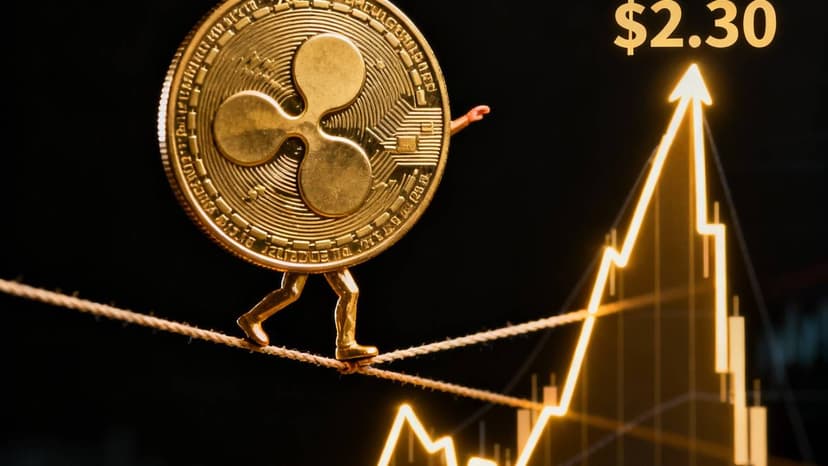เกี่ยวกับ XRP
XRP ทำงานบนกลไกการเห็นพ้องที่ไม่เหมือนใครซึ่งเรียกว่า Ripple Protocol Consensus Algorithm (RPCA) ซึ่งทำให้แตกต่างจากระบบการพิสูจน์การทำงานและการพิสูจน์การถือครองแบบดั้งเดิม อัลกอริธึมนี้ช่วยให้การประมวลผลธุรกรรมรวดเร็วโดยอนุญาตให้เครือข่ายของผู้ตรวจสอบอิสระเห็นพ้องกันเกี่ยวกับลำดับและความถูกต้องของธ...
สถาปัตยกรรมของ XRP Ledger ถูกออกแบบมาเพื่อรองรับการทำธุรกรรมที่มีปริมาณสูงและความหน่วงต่ำ ทำให้สามารถชำระธุรกรรมได้ในเวลาเพียงไม่กี่วินาที แตกต่างจากสกุลเงินดิจิทัลหลายๆ ตัว XRP ไม่พึ่งพาเวลาในการบล็อกหรืออัลกอริธึมการแฮช ซึ่งช่วยเพิ่มประสิทธิภาพในการจัดการธุรกรรมจำนวนมาก เครือข่ายที่กระจายอำนาจนี้...
XRP ถูกใช้เพื่ออำนวยความสะดวกในการชำระเงินข้ามพรมแดนและการโอนเงิน โดยเสนอทางเลือกที่รวดเร็วและคุ้มค่ากว่าระบบธนาคารแบบดั้งเดิม ตัวอย่างที่น่าสังเกตคือบทบาทในการทำธุรกรรมทันทีระหว่างสถาบันการเงิน ซึ่งสามารถลดเวลาและค่าธรรมเนียมที่เกี่ยวข้องกับการโอนเงินระหว่างประเทศได้อย่างมาก บริษัทอย่าง MoneyGram...
XRP มีจำนวนรวมสูงสุด 100 พันล้านโทเคน ซึ่งถูกสร้างขึ้นในช่วงเริ่มต้น โดยมีสัดส่วนที่สำคัญถูกถือโดย Ripple Labs เพื่อสนับสนุนการพัฒนาและการเติบโตของระบบนิเวศ โมเดลการกระจายรวมถึงการใช้โทเคนที่ขุดล่วงหน้าและการปล่อยเป็นระยะจากบัญชีเอสโครว์ เพื่อให้มีการควบคุมอุปทานเพื่อลดแรงกดดันจากเงินเฟ้อ...
ความปลอดภัยของ XRP Ledger ได้รับการสนับสนุนจากกลไกการเห็นพ้องที่ไม่เหมือนใครคือ Ripple Protocol Consensus Algorithm (RPCA) ซึ่งอิงจากเครือข่ายของผู้ตรวจสอบที่เชื่อถือได้ในการยืนยันธุรกรรม RPCA ช่วยให้ผู้ตรวจสอบสามารถบรรลุฉันทามติในสถานะของเลเยอร์ในลักษณะที่กระจายอำนาจ...
แผนพัฒนาสำหรับ XRP มุ่งเน้นไปที่การเพิ่มขีดความสามารถ ฟังก์ชันการทำงาน และการนำไปใช้ของ XRP Ledger ตั้งแต่เปิดตัวในปี 2012 จุดมุ่งหมายสำคัญรวมถึงการเปิดตัวการแลกเปลี่ยนแบบกระจายอำนาจของ XRP Ledger ในปี 2014 ซึ่งอนุญาตให้ผู้ใช้ทำการซื้อขายสกุลเงินต่างๆ ได้โดยตรงบนแพลตฟอร์ม ในปี 2018...
วิธีการรักษาความปลอดภัยให้กับ XRP ของคุณ?
เพื่อเพิ่มความปลอดภัยให้กับ XRP ของคุณ ควรพิจารณาใช้ฮาร์ดแวร์วอลเล็ต ซึ่งให้สภาพแวดล้อมที่ปลอดภัยในการเก็บกุญแจส่วนตัว ตัวเลือกที่เชื่อถือได้ ได้แก่ Ledger และ Trezor สำหรับการจัดการกุญแจส่วนตัว ควรเก็บกุญแจของคุณอย่างปลอดภัยและไม่แชร์; ใช้รหัสผ่านที่แข็งแกร่งและไม่ซ้ำกัน...
ควรระวังความเสี่ยงด้านความปลอดภัยทั่วไป เช่น การโจมตีแบบฟิชชิงและมัลแวร์; ลดความเสี่ยงเหล่านี้โดยการเปิดใช้งานการยืนยันตัวตนแบบสองขั้นตอนในบัญชีของคุณและอัปเดตซอฟต์แวร์ของคุณอย่างสม่ำเสมอ ตัวเลือกความปลอดภัยแบบหลายลายเซ็นสามารถเพิ่มการป้องกันได้อีก โดยต้องใช้กุญแจส่วนตัวหลายตัวในการอนุญาตธุรกรรม...
สุดท้าย ควรมีขั้นตอนการสำรองข้อมูลที่แข็งแกร่ง โดยการเก็บสำเนาของวลีเมล็ดในวอลเล็ตและกุญแจส่วนตัวในหลายสถานที่ทางกายภาพอย่างปลอดภัย เพื่อให้แน่ใจว่าปลอดภัยจากการโจรกรรมหรือการสูญหาย
XRP ทำงานอย่างไร?
XRP ทำงานบนสถาปัตยกรรมบล็อกเชนที่ไม่เหมือนใคร ซึ่งแตกต่างจากระบบการพิสูจน์การทำงานหรือการพิสูจน์การถือครองแบบดั้งเดิม โดยใช้กลไกฉันทามติที่เรียกว่า Ripple Protocol Consensus Algorithm (RPCA) ซึ่งช่วยให้โหนดในเครือข่ายที่เรียกว่า ผู้ตรวจสอบ สามารถบรรลุฉันทามติในสถานะของบัญชีแยกประเภทได้โดยไม่ต้องขุด...
ธุรกรรมจะถูกตรวจสอบผ่านกระบวนการที่กลุ่มผู้ตรวจสอบที่เชื่อถือได้ตกลงกันเกี่ยวกับลำดับและความถูกต้องของธุรกรรม ซึ่งช่วยลดเวลาในการยืนยันธุรกรรมเมื่อเปรียบเทียบกับบล็อกเชนแบบดั้งเดิม ความปลอดภัยของเครือข่ายถูกดูแลผ่านแนวทางแบบกระจายศูนย์ โดยมีผู้ตรวจสอบอิสระหลายรายเพื่อป้องกันไม่ให้หน่วยงานใดหน่วยงานห...
นอกจากนี้ XRP ยังมีคุณสมบัติทางเทคนิคที่โดดเด่น เช่น ค่าธรรมเนียมธุรกรรมต่ำและความสามารถในการอำนวยความสะดวกในการชำระเงินข้ามพรมแดนอย่างมีประสิทธิภาพ ทำให้เป็นตัวเลือกที่เหมาะสมสำหรับสถาบันการเงินที่ต้องการปรับปรุงกระบวนการชำระเงินของตน

